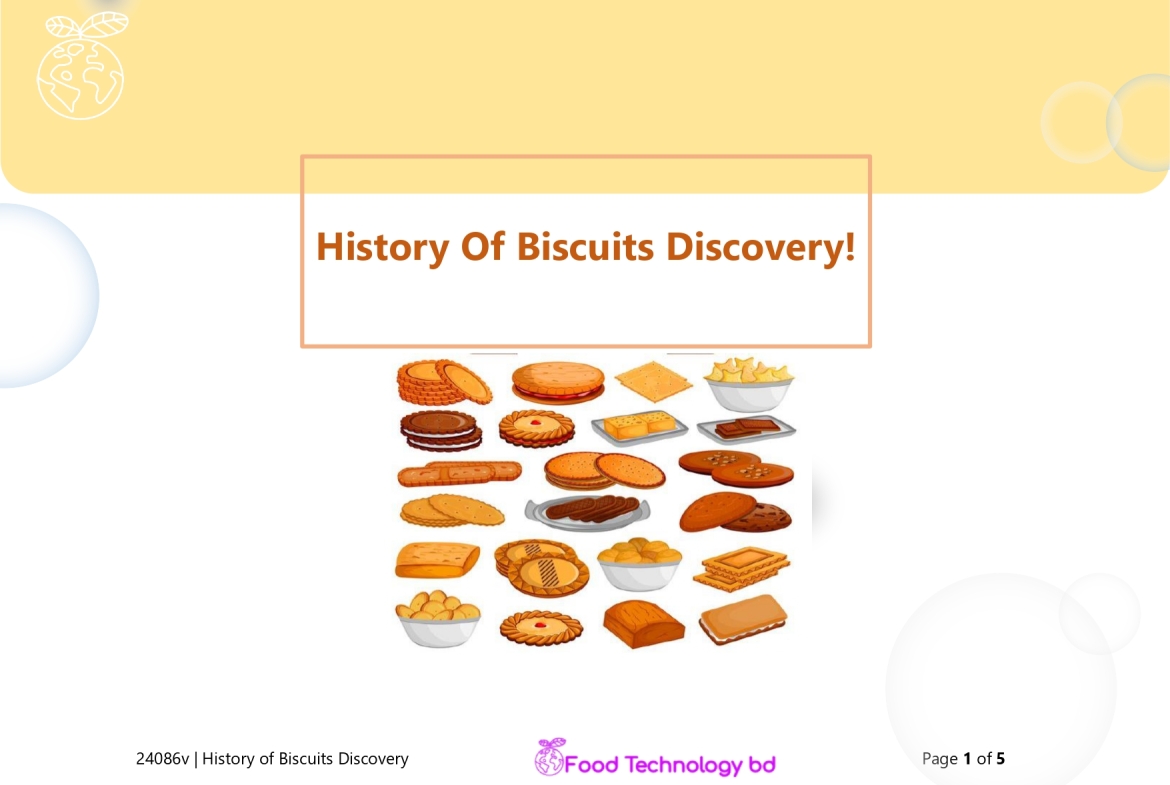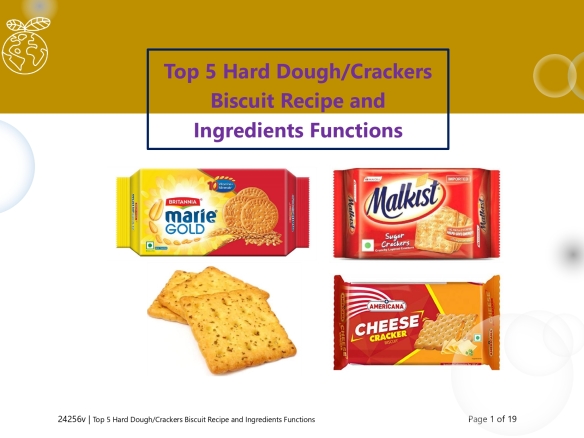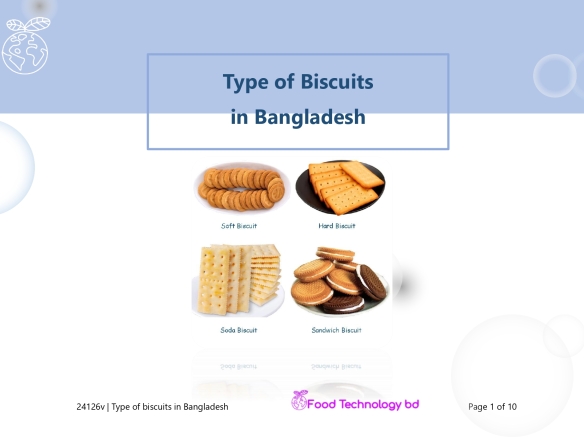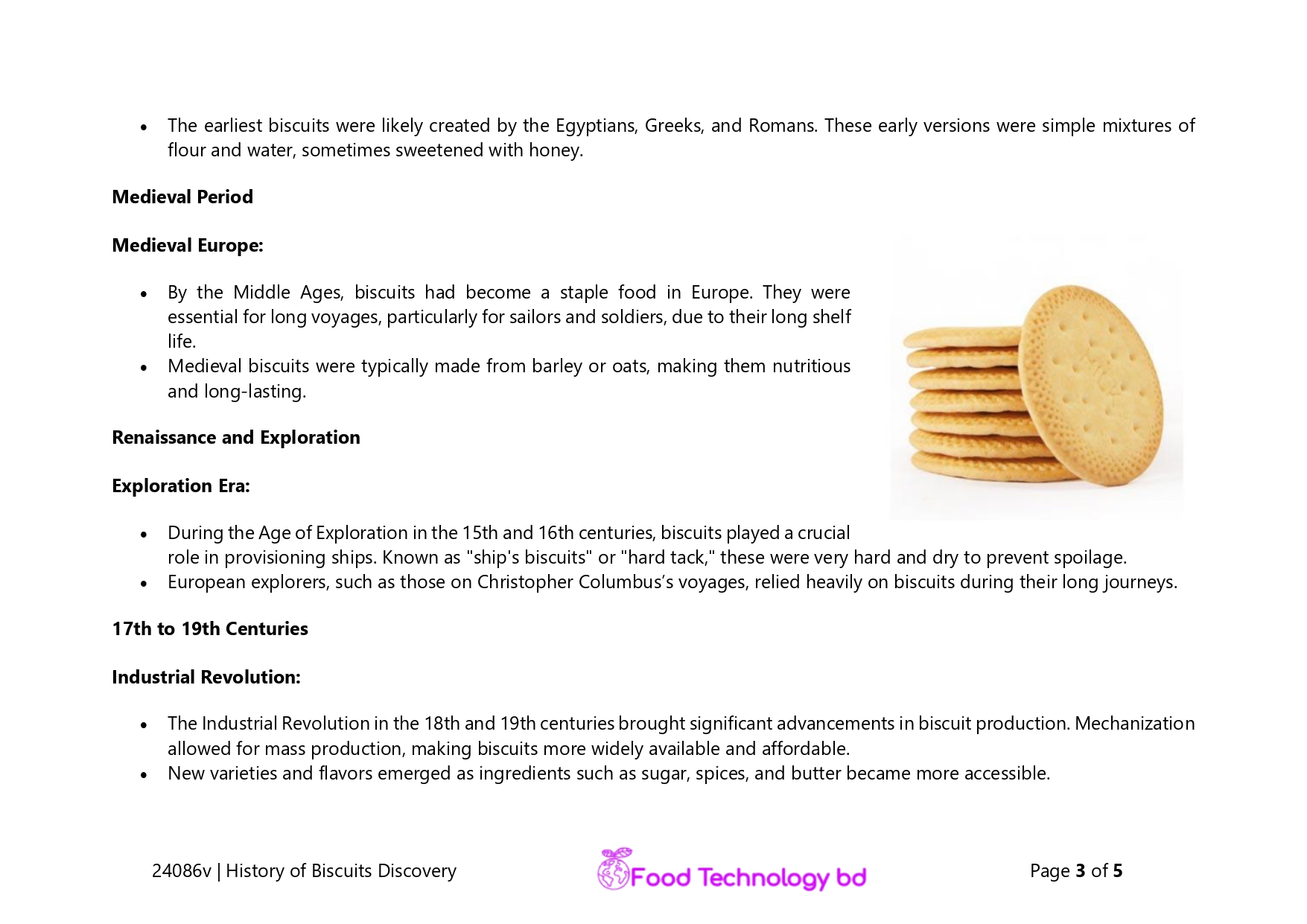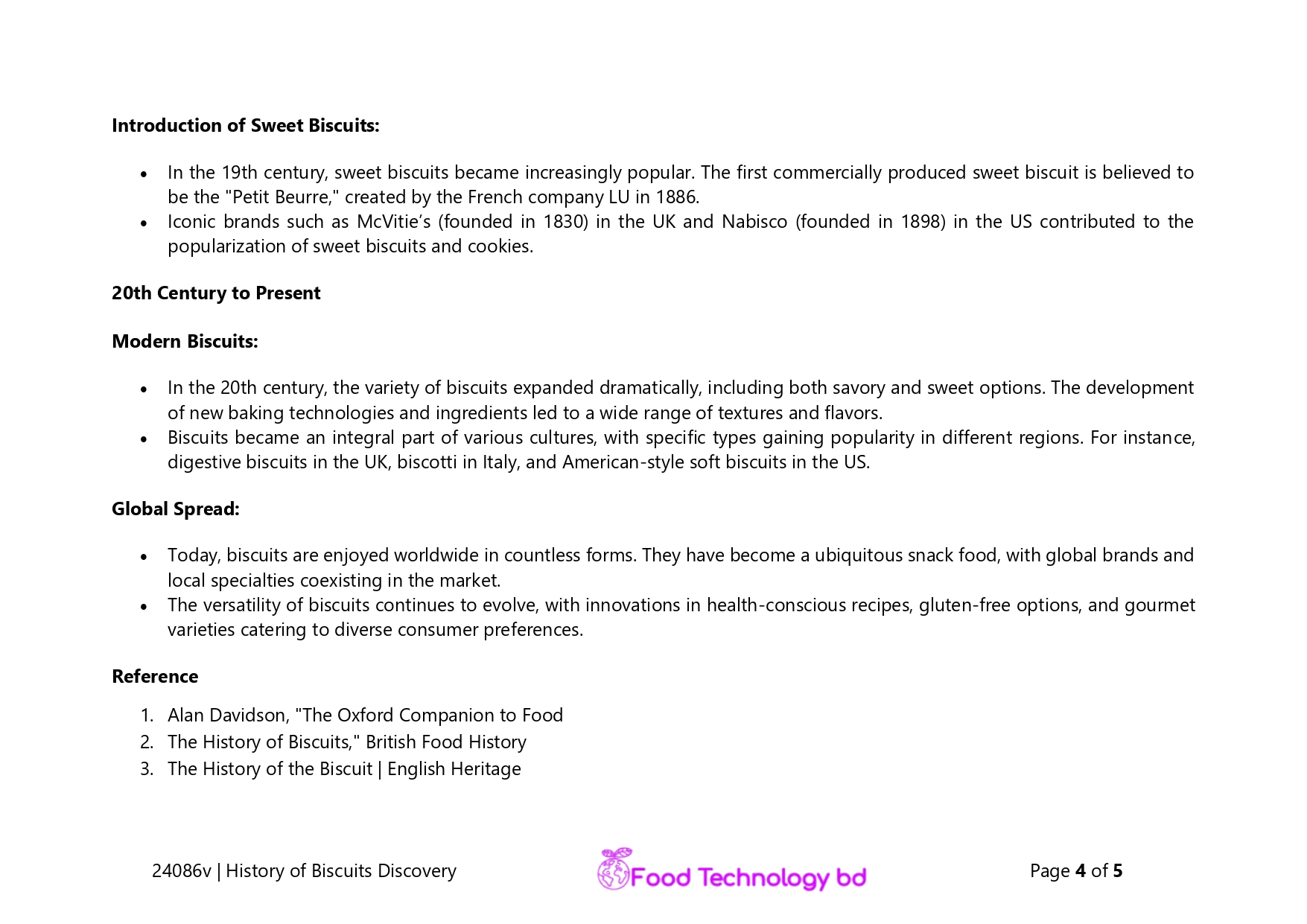Free
History Of Biscuits Discovery
Description
What is biscuit?
Biscuit” can refer to different types of baked goods depending on the region:
- In the United Kingdom and Commonwealth countries:
- A biscuit is a small, typically sweet baked good that is similar to what is known as a cookie in the United States. Examples include digestive biscuits, shortbread, and custard creams.
- In the United States:
- A biscuit is a soft, leavened bread, often served as a side dish with meals. These biscuits are typically made with flour, butter, milk or buttermilk, and a leavening agent such as baking powder. They are flaky, tender, and can be either sweet or savory. American biscuits are commonly served with gravy, honey, or butter.
- In general baking terminology:
- “Biscuit” can also refer to any kind of baked, flour-based product that is typically small and flat. This broad definition can include both the UK-style sweet biscuits and the US-style soft bread biscuits.
History of biscuits discovery?
The history of biscuits is rich and spans many centuries, with its roots tracing back to ancient civilizations. Here is an overview of the discovery and evolution of biscuits:
Ancient Beginnings
Early Origins:
- The term “biscuit” is derived from the Latin words “bis coctus,” meaning “twice-baked.” This method of baking was used to produce a dry, hard biscuit that could be stored for long periods, making it ideal for travel and military campaigns.
- The earliest biscuits were likely created by the Egyptians, Greeks, and Romans. These early versions were simple mixtures of flour and water, sometimes sweetened with honey.
Medieval Period
Medieval Europe:
- By the Middle Ages, biscuits had become a staple food in Europe. They were essential for long voyages, particularly for sailors and soldiers, due to their long shelf life.
- Medieval biscuits were typically made from barley or oats, making them nutritious and long-lasting.
Renaissance and Exploration
Exploration Era:
- During the Age of Exploration in the 15th and 16th centuries, biscuits played a crucial role in provisioning ships. Known as “ship’s biscuits” or “hard tack,” these were very hard and dry to prevent spoilage.
- European explorers, such as those on Christopher Columbus’s voyages, relied heavily on biscuits during their long journeys.
17th to 19th Centuries
Industrial Revolution:
- The Industrial Revolution in the 18th and 19th centuries brought significant advancements in biscuit production. Mechanization allowed for mass production, making biscuits more widely available and affordable.
- New varieties and flavors emerged as ingredients such as sugar, spices, and butter became more accessible.
Introduction of Sweet Biscuits:
- In the 19th century, sweet biscuits became increasingly popular. The first commercially produced sweet biscuit is believed to be the “Petit Beurre,” created by the French company LU in 1886.
- Iconic brands such as McVitie’s (founded in 1830) in the UK and Nabisco (founded in 1898) in the US contributed to the popularization of sweet biscuits and cookies.
20th Century to Present
Modern Biscuits:
- In the 20th century, the variety of biscuits expanded dramatically, including both savory and sweet options. The development of new baking technologies and ingredients led to a wide range of textures and flavors.
- Biscuits became an integral part of various cultures, with specific types gaining popularity in different regions. For instance, digestive biscuits in the UK, biscotti in Italy, and American-style soft biscuits in the US.
Global Spread:
- Today, biscuits are enjoyed worldwide in countless forms. They have become a ubiquitous snack food, with global brands and local specialties coexisting in the market.
- The versatility of biscuits continues to evolve, with innovations in health-conscious recipes, gluten-free options, and gourmet varieties catering to diverse consumer preferences.
Reference
- Alan Davidson, “The Oxford Companion to Food
- The History of Biscuits,” British Food History
- The History of the Biscuit | English Heritage

